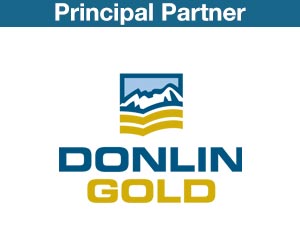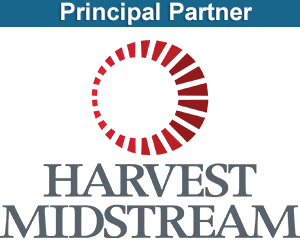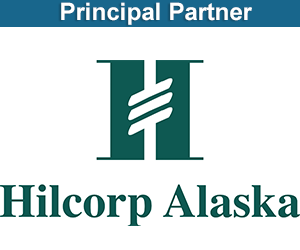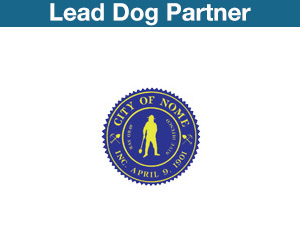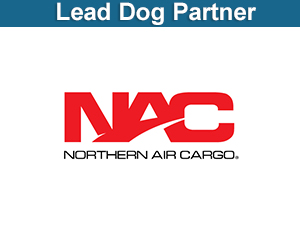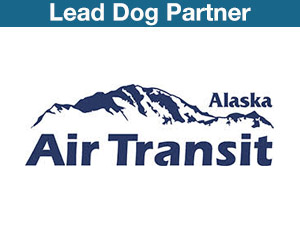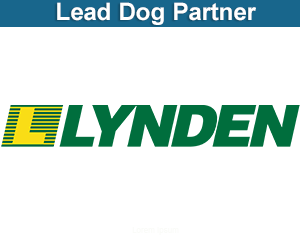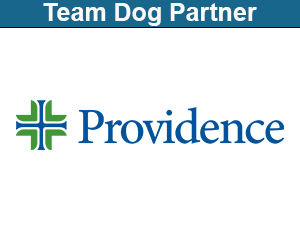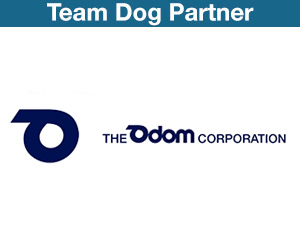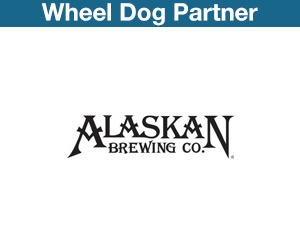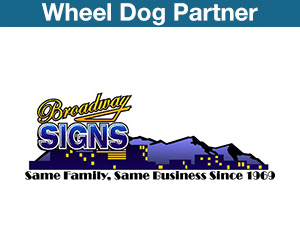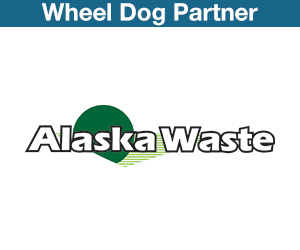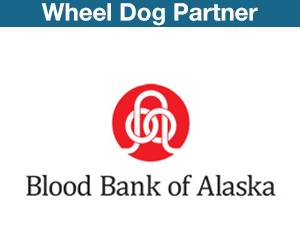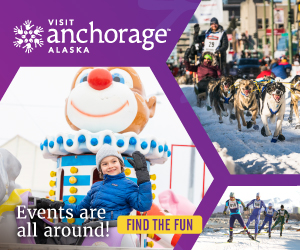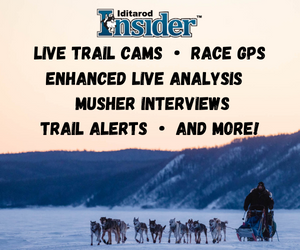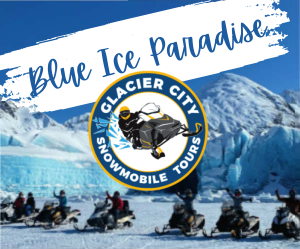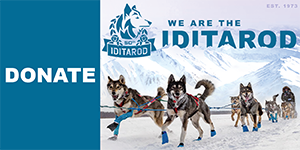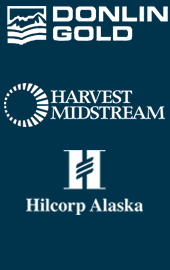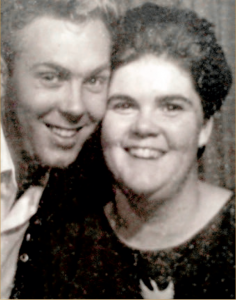
Walt and Gail Phillips. Photo provided by the Walt and Gail Phillips collection
Article by Walt and Gail Phillips
Excerpt from the book Iditarod: The First 10 Years, an anthology compiled by The Old Iditarod Gang.
When the Iditarod Race was first under consideration, the organizers included members of the Wasilla–Knik Centennial Race Committee (organizers of the 1967 race along the southern portion of the Iditarod Trail), members of the Aurora Dog Musher’s Club in Knik, and the newly formed Iditarod Trail Committee. The Iditarod Trail Committee had been organized as a non-profit corporation and included Joe and Vi Redington, Al Hibbard, Dorothy Page, Ed Carney, Tom Johnson, Gleo Huyck, and John Norman as legal advisor. Others like Bill Weimer, Dick Mackey, Jay Bashor, Dave Olson, and Bill Devine soon became actively involved. Even though the larger board held public meetings from time to time, a small intimate group of planners and organizers met regularly. Gleo, Tom, and Joe met almost nightly.
Meanwhile, Howard and Julie Farley were actively promoting and helping to organize on the north end. As a result of this combined dedication, the races of 1973 and 1974 were successfully completed and financed. By the end of the 1974 racing season, however, Joe Redington Sr. had mortgaged his home for the prize money and his hard-working and generous friends were basically tapped out. Interest in the race was waning, and the press coverage was dwindling. Only Joe was still optimistic.
New blood was needed to rebuild the early excitement. To attract major corporate sponsors, a sustainable multiple-year business plan was needed. No longer could the race squeak through a year at a time. The reorganization of the Nome Kennel Club provided the needed spark at the finish-line end. Down in Southcentral, rebuilding the organization was less dramatic. Von Page, Dorothy’s husband, stepped up and took over as Board President. Under his quiet but firm leadership, conditions slowly and steadily began to improve.
We had followed the 1973 race from afar: We were in Texas where Walt was on temporary assignment with the trans-Alaska (now Alyeska) Pipeline design team. Upon returning to Alaska in 1974, Gail immediately signed up as a volunteer and became active in helping the organization in Anchorage, Wasilla, and Knik. One of Gail’s first responsibilities was boosting race interest by making presentations throughout the local communities with Joe Redington. They put on seminars at museums, met with the business community leaders, talked with students, and told the Iditarod story to anyone who would listen.
It was incredible to witness the excitement and interest from the folks who came to hear about the race. Many of these folks became lasting supporters and volunteers for the Anchorage and Wasilla headquarters and along the trail. Folks like Raine Hall Rawlins, Anne Patch Winters, Cathy (Thompson) Mackey, and Jim Wood soon became permanent fixtures at board meetings, along with Lynn Wylie, Jules Mead, Don Brugman, Tom Jensen, and others. Corporate support became a deciding factor in the success of the 1975 race when ARCO Alaska committed to providing the desperately needed prize money for that year.
In preparation for the 1975 race, we both spent many hours volunteering at the Race Headquarters, which was located in the lobby of the Old Anchorage Westward Hotel (now the Anchorage Hilton). We arranged for a babysitter for our daughters, Robin and Kim, so we could work the information desk in the evenings after we got off work. As our girls grew older, they often accompanied us and were soon helping out in many ways.
Several days before the race began, our friend, Leo Rasmussen from Nome, descended upon our home with boxes and boxes of “trail mail” that had to be organized, stamped, and packaged for the mushers to carry to Nome. Leo and Dave Schwantes from Anchorage were responsible for this function of the race for many years and their stories are in this book. Today’s mushers are still required to carry the Trail Mail.
Gail was nominated to the Board of Directors in 1975 and served on the Board through 1979. In addition, she became the Board Secretary in 1976 and then took on the all-consuming duties of Race Coordinator for the ’77, ’78, and ’79 races. She was the last person to fulfill the duties of that position on a totally volunteer basis.
By 1976 we were spending more and more time at the Race Headquarters, and Gail started taking on the responsibility of the pre-race Banquet and Musher’s Drawing in Anchorage. We often had a sold-out crowd for this event—everyone wanted to be a part of the Iditarod! By 1977, organizing and planning each year’s race had become a full-time job. About that time, the Board separated the responsibility for race organization from the fundraising functions.
About a week before the 1976 race, the Board Treasurer, Dr. Hal Bartko, resigned his position. President Von Page brought the bank book and a stack of unpaid bills to the Race Headquarters at the Anchorage Westward Hotel lobby and handed them to Walt with the request that he take over as Acting Treasurer. At the annual meeting that year Walt was formally elected Treasurer of the Iditarod Trail Committee, a position he held until other business commitments forced his resignation, and he was replaced by Anne Patch Winters at the 1978 annual meeting. Because much of the money handled by the treasurer was cash from small individual donations and sales of memorabilia, and because the race budget for 1978 had topped $100,000 (a huge sum at that time), Walt arranged for all succeeding treasurers to be bonded—another first for the Iditarod.
A formal race headquarters was established in Anchorage when the Anchorage Westward Hotel gave us prime space in the lobby for a big Iditarod booth, complete with the huge trail map designed by Bill Devine. On the second floor we also had a small hotel room for our “radio room.” In those days, communications along the trail came from our HAM operators at the checkpoints and from pilots calling in when they got to a community that had phone service. We set up two Code-a-Phones in the radio room and had volunteers man these phones around the clock. When a HAM operator or pilot called in with a message, their updates came in on one phone and then we recorded an outgoing message on the other phone, giving race details for the public and the press. These updates were shown on the trail map in the lobby also. It was exciting to see the interest of the general public who poured in to hear reports and actually watch the progress of each musher on the giant map.
Along with making race information and updates available to the public, we also began merchandising Iditarod memorabilia, starting with small items like buttons, belt buckles, and T-shirts, most of which were designed by Bill Devine. In 1977, artist Jon Van Zyle introduced the first annual Iditarod Poster and our merchandising efforts became an important part of our early fundraising efforts. We soon expanded these efforts to various public events, bazaars, and eventually we had our own booth at the Alaska State Fair in Palmer, which is still in existence today.
During the formative years of the Iditarod, Race Marshal Dick Tozier, drawn from the ranks of the Anchorage Sprint Race Association, was the sole race official. By 1977, the Iditarod Board had taken full control of the race and provided for a three-person officiating team. That year Joel Kottke, who was still affiliated with the Sprint Race Association, was our Race Marshal, and he was assisted by Walt as the Starting Line Judge in Anchorage, and Howard Farley as the Finish Line Judge in Nome.
As an interesting side note, during the time that we were serving as Secretary and Treasurer of the Board (1976–1978), the address of record for the Iditarod Trail Committee was our home on Roosevelt Drive in Anchorage. During this time monthly board meetings were held alternately at our home and at Dorothy and Von Page’s home in Wasilla. In 1978, a permanent office was established in Wasilla—first in a corner of the local museum and then in the loft above Teeland’s General Store—a space generously donated to the Iditarod Trail Committee by proprietor Jules Mead for $1 per year.
At this time, dedicated volunteer and Iditarod Runner editor, Raine Hall Rawlins, was hired as Office Manager and became the first paid employee of the Iditarod Trail Committee. Thousands of operational details had to be taken care of for each race. We all had our jobs to do. Trailbreakers had to be contracted with to put in and maintain the trail before the race could start. This included arranging for their fuel and equipment all along the trail. Once the mushers were officially signed up, arrangements had to be made to move their food and supplies into various checkpoints. The Iditarod Air Force had that responsibility, but again, fuel and constant coordination was needed.
All the checkers for the individual checkpoints had to be contacted ahead of time to make sure we had each checkpoint covered. Many of the checkpoints were staffed by local volunteers, but the logistics for getting checkers and supplies into the more remote areas was enormous. Seventy-five percent of the checkpoints were in areas that could only be reached by airplane, dog teams, or snow machines. In addition, we worked on getting the veterinarians and HAM radio operators into most of the checkpoints to provide care for the dogs and to maintain emergency communications. The radio operators also served as our main source of race information, providing timely and official results along the race route. The race officials, including Race Marshal and Race Judges, all had to be confirmed before the race would begin.
Other pre-race arrangements included organizing the Musher’s Drawing Banquet and making sure each musher had met all the necessary requirements, including the veterinarian checks, before race day start. Because our Headquarters was more than just an informational booth, Iditarod merchandize had to be ordered early so it would be available for sale during the race.
Race day starts often meant additional challenges, depending upon weather, snow conditions, etc. Because of this, we had to be flexible up until the “last minute” to arrange everything that was needed to officially start the race. Official race starts were in Anchorage, but after the first two years, due to difficulties crossing the Knik and Matanuska River bridges, the dogs were transported from the Eagle River checkpoint to the Wasilla checkpoint by dog truck and with a four-hour staging window.
The Anchorage starting line varied over the years with starts staged at the Tudor Track, at Mulcahy Park and downtown on 4th Avenue. With shifting weather patterns, the Wasilla checkpoint was bypassed some years due to lack of snow. Alternate checkpoints included Settler’s Bay, Big Lake, Nancy Lake, and Knik Lake. It wasn’t until the later years that the race would have a ceremonial start on 4th Avenue in Anchorage and then an official restart in the Matanuska Valley.
Through the years, what really stands out in our memory is the extraordinary dedication of an army of volunteers. As we have said before, the race would not and could not have continued without volunteers who gave their all to make sure the race would be a success! The lure and romance of doing something so Alaskan sucked all of us in. We loved being involved, we loved being a part of this wonderful “happening,” and we all worked hard to make it happen.
Each entity involved in the race had its own priorities and financial needs, which all had to be constantly juggled to ensure a smooth and safe race for all. Working closely with the Nome Kennel Club, we were able to insure as safe and as competitive a race as was humanly possible. As the Anchorage end of the race was consumed with the start, the Nome Kennel Club was working on the same scale to support the Nome-end finish. It became a shared responsibility. Their involvement was supported by elected representation from Nome on the Iditarod Board of Directors.
By 1979, Al Crane from Nome was elected President of the Board, which cemented a firm working relationship with both ends. As the race grew and the mushers’ field of entrants increased, we were tasked with more and more operational responsibilities. Without the support of the folks at the Nome end, the race could not have been as successful as it has been.
Very quickly, people from all over the state and all along the race route became members of the “Iditarod Family.” After the early races, and as knowledge of the race spread throughout the world, people from all over the country would come to Alaska to help on the race and to travel to Nome for the race’s finish. The Iditarod Family today numbers in the thousands and includes folks from all corners of the world.
Probably the only Iditarod regret we have is that during the one-second finish between Dick Mackey and Rick Swenson in 1978, we were two of the only volunteers left in Anchorage manning the headquarters and personally missed that dramatic moment. Gail was in the radio room at the Westward Hotel for that finish and was listening to the report from KNOM radio. That was one fantastic moment for the Iditarod race!
The operational activities of the race have grown significantly since those first early years; however, we can tell you we wouldn’t have missed being a part of those days for anything in the world!
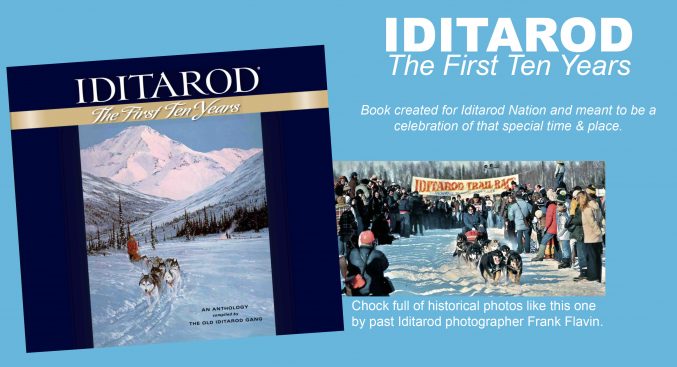 |
The Iditarod, The First Ten Years book is over 400 pages and available to purchase at the Iditarod Headquarters and online here. Own this one of a kind anthology written by the organizers, mushers, and volunteers! Educators receive a special discount rate by ordering through Iditarod Education Director, Jane Holmes. Email Jane.Holmes@iditarod.com |




